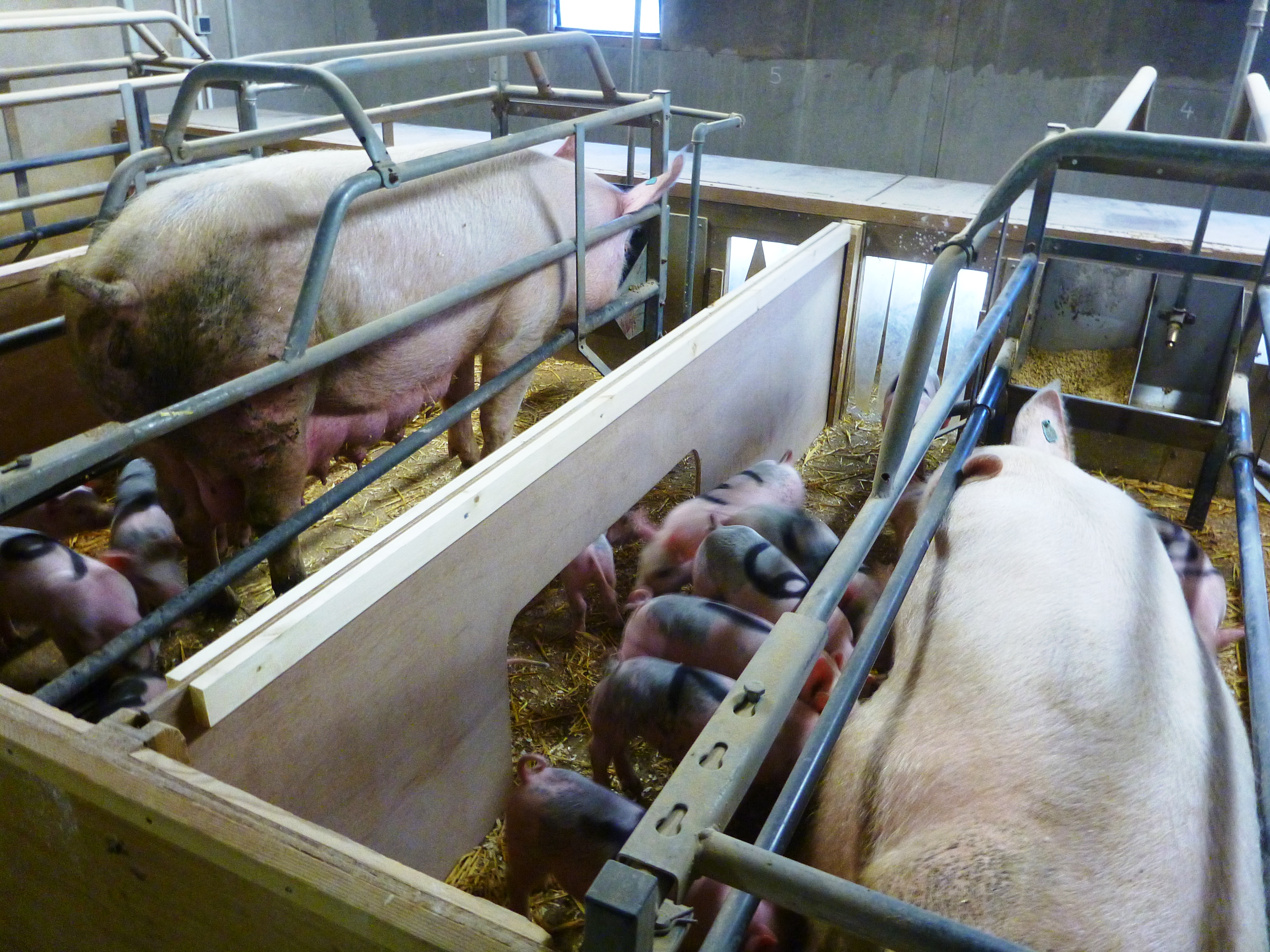



Weighing up the costs and benefits of co-mingling piglets before weaning
What are the pros and cons of co-mingling? One researcher provides an overview based on 30 years of research studies against the background of concerns in practice.Development of social skills
In nature, piglets would leave the nest at around four days of age and join the sounder group at around 10 days of age to gradually mingle with piglets of other litters. This process proceeds without much aggression and the piglets habituate to meeting unfamiliar pigs. In commercial practice, litters usually remain separated until weaning, when pigs are around four weeks of age. As the exposure to unfamiliar piglets at that time is sudden, and the piglets are older (and thus stronger) the fights are prolonged and more severe. It is also thought that this late exposure to strangers can reduce social skills in general.
Early life socialisation
There are several ways to provide piglets with better social development. A natural way in which socialisation occurs is when sows are kept outdoors with their piglets or when a multi-suckling system is applied. Here both sows and piglets mingle after farrowing, and the exposure to others is gradual. A more laborious method is to remove the barrier between two or more farrowing pens of sows that have farrowed around the same day (maximum three days apart). Alternatively, the barrier can stay in place but have an opening so that piglets can freely move between the pens, but the sows stay in place (see image 1). Research recommends that socialisation would take place around 10-14 days of age. The piglets have then gained some physical strength but aggression is less severe, and this phase may be the best time window for learning social skills. Both methods have already been applied since the nineties, but the uptake in practice is limited.

© M. Farish (SRUC)
Research versus practice
A survey amongst UK pig farmers showed that the experiences from practice with early life socialisation do not align with what has been shown in research studies. Whereas research studies show no negative effect on piglet health, no increase in savaging, limited cross-suckling and no weight loss, UK farmers indicated many concerns around these issues.
The concerns maybe partly justified: in research studies there are more staff available for animal husbandry tasks and the amount of labour is not taken into account. Moreover, research studies often only include animals that are healthy to start with, whereas practice will have to deal with sick and injured animals.
This said, a socialisation study that was carried out on a large commercial farm in Spain showed similar positive benefits of socialisation, with piglets fighting less at weaning.
Benefits
The main benefit derived from letting piglets co-mingle before weaning is the reduction in aggression later on. Upon co-mingling different litters, there can be some aggression, which is usually minor as the piglets are young. This process results in less aggression at weaning, but also in a reduction in aggression up to 11 weeks of age. The reduction in aggression is assumed to occur due to better social skills, which enable dominance relationships to be established more rapidly. In most studies, no effect on growth was found, whereas some found that socialised pigs had a better growth rate.
Aggression coincides with a drop in feed intake and the accumulation of skin lesions, which may be a route for infection. Therefore growth and health, as well as welfare in general, can be temporarily impaired around regrouping. Avoiding this aggression will thus avoid the costs.
So far, no one has studied the effects of co-mingling in pigs older than 11 weeks.

© I. Camerlink
Costs
In the case that socialisation is not a natural occurrence on farm, the implementation and management of socialisation may come with some costs.
- First of all, the barriers between the farrowing pens may need to be adjusted. Not all pen designs allow for the removal of a dividing wall, and instead a piglet-sized opening may need to be cut. To allow piglets to mingle only from a certain age, the opening could have, for example, a sliding door or a heightened step that can only be overcome when piglets are of a certain size.
- If piglet handling needs to take place after co-mingling then extra labour costs may occur as it can be time-consuming to catch the piglets.
- Veterinarians have expressed concerns about disease transmission between litters and would rather co-mingle piglets as late as possible before weaning. The benefits for social skills are then largely lost as the pigs will fight almost as intensely as at weaning. So far, none of the research studies has had problems with disease transmission or higher mortality.
- For the remainder, costs will depend on farm problems that already prevail. When there are, for example, problems with savaging sows, sows with low milk production, udder damage, or frequent crushing, then these problems may increase during the socialisation process as there will be more piglets around one sow at a given time. However, this does not mean that socialisation cannot be applied.
Overcoming difficulties
If any of the above issues are problematic at the farm then it is better to avoid socialising the piglets of that particular litter. Especially savaging sows or ill sows can better be left with their litter alone. One research study showed that udder lesions of the sow may worsen in socialised litters, and this should be taken into account when deciding which litters are fit for this intervention.
In this sense, it does take some attention and time when deciding which litters are suitable for co-mingling. With time, a stricter selection for sows with good mothering qualities would be beneficial in the process of socialisation as well as in raising the quality of life for piglets and sows, and improving their productivity during the lactation stage.
Trial and error
Whether socialisation will be suitable for a certain farm, and whether the benefits will weigh up against the costs, will depend on the farm situation and management. What we can conclude from the last 30 years of research on piglet socialisation that: 1) research should better consider the actual situation in practice in order to assess the feasibility of a method in practice; and 2) farmers can take a similar approach to researchers by starting initially with small pilot groups to determine if a particular method works for them.
| References | ||||
|---|---|---|---|---|
| Irene Camerlink, ,Marianne Farish, Rick B. D’Eath, Gareth Arnott and Simon P. Turner | ||||
| (2018) | Long Term Benefits on Social Behaviour after Early Life Socialization of Piglets. Animals | 8(11):192 |









